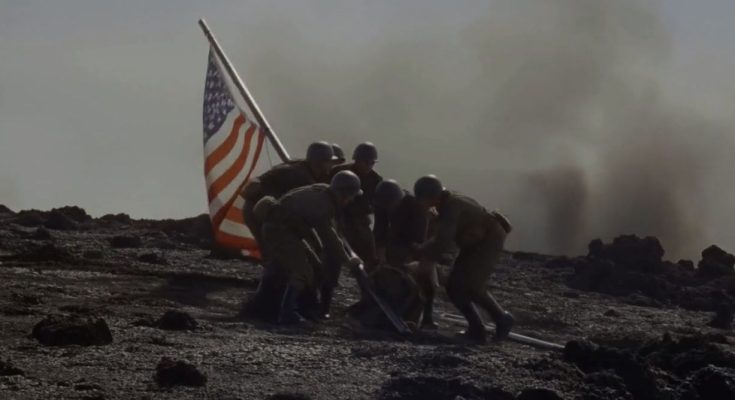During the fierce battles of World War II, few moments captured the spirit of American determination as powerfully as the flag raising on Iwo Jima. On February 23, 1945, in the midst of one of the bloodiest campaigns of the Pacific, six U.S. Marines raised the American flag atop Mount Suribachi. What might have been a simple act of victory soon became one of the most iconic images in American history.
The Battle of Iwo Jima was critical for U.S. forces. The island, heavily fortified by Japanese troops, was strategically important as an airbase for bombers and fighter escorts. Securing it came at a tremendous cost: nearly 7,000 Americans were killed, and over 20,000 were wounded. Amid such sacrifice, the raising of the flag offered a rare moment of triumph and hope.
The photograph, taken by Associated Press photographer Joe Rosenthal, showed the Marines straining together to plant the Stars and Stripes in the volcanic ash of Mount Suribachi. It wasn’t staged—Rosenthal had been in the right place at the right time. The image instantly resonated with the American public when published back home, symbolizing courage, unity, and the resolve to finish the war.
The picture went on to win the Pulitzer Prize and is still one of the most reproduced and recognized war photographs ever taken. It also inspired the U.S. Marine Corps War Memorial in Arlington, Virginia, where a massive bronze statue immortalizes the moment for future generations.
Behind the photograph were real men, each with his own story. Three of the flag raisers—Franklin Sousley, Harlon Block, and Michael Strank—were killed in action soon after. The surviving Marines, Ira Hayes, Rene Gagnon, and Harold Schultz, returned home as reluctant heroes, often struggling with the fame thrust upon them and the painful memories of war.
The flag raising on Iwo Jima is more than just a picture—it is a reminder of sacrifice, perseverance, and the cost of freedom. While the photograph captures a single moment frozen in time, its meaning endures, reminding us of the courage displayed in one of America’s darkest and most defining battles.
More than 75 years later, the image remains a powerful symbol of victory, unity, and the indomitable spirit of those who fought.
VIDEO



